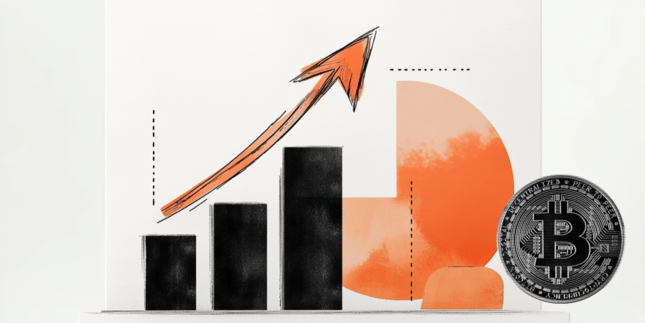If you are like most people, the savings earmarked for your retirement may be scattered among several different places. Today we’ll look at a few of those possibilities and discuss some alternatives.
The point of this discussion is to help you to see the entirety of your retirement asset base as a whole, but one with multiple components; and to think about ways to maximize the overall rate of return.
The first thing to do is to categorize those retirement assets that you currently own. These may fall into several categories:
-
Assets held in your own name or jointly with a spouse
- Brokerage accounts (containing stocks, bonds, mutual funds and/or ETFs)
- Mutual funds
- Hedge fund accounts
- Real estate (other than your home(s))
- Precious metals, gemstones, collectibles
- Partnership interests, stock in privately held companies, venture capital investments
- Annuities, whole life insurance policies
- Vested rights to old-style defined benefit pension plans (not many of these left!)
-
Assets held in a current employer’s retirement plan
- 401(k) for many corporate employees
- 403(b) for teachers and some others
- 457(b) for many government employees and some employees of non-profits
- Other retirement account sponsored by a current employer
-
Assets in plans like the above sponsored by former (not current) employer
-
Assets held in a tax-advantaged retirement account for you as an individual, which may have a bank, a brokerage, or another type of company as custodian. All of the following types of accounts are most often invested in mutual funds, although there are other possibilities.
- Traditional IRA
- Roth IRA
- SEP-IRA
- SIMPLE IRA
- Solo 401(k)
Making a complete inventory of the assets you have to work with is a necessary first step. For each one of these assets, you’ll need to know its current market value and an estimate of its rate of return. If you work with a financial adviser, they should be able to help with that. If not (and if not, congratulations on your initiative to manage your financial affairs personally!) this is homework that you’ll need to do. For rate of return estimates, look at previous years’ statements, going back as far as you can to get a picture of the rate of return in differing market conditions. One warning: for stocks and mutual funds, the last seven years have been a roaring bull market, a period of atypically high returns that we would not expect to be the norm going forward.
With this information listed on one page, you can now see the whole and its component parts.
The next step is to decide what needs to be changed, if anything. The goal is to have an asset base that provides an adequate return, while being properly protected against a bad market in any one area such as the stock market.
One example of what you would not want to see, unfortunately, is the situation that many people find themselves in. That is having all of your assets in a current or former employer’s 401(k), where it is invested in a couple of stock-based mutual funds. These funds (and all stock-based mutual funds, whatever their orientation) could be decimated by a stock market crash. And the nature of stock markets is to have bull markets alternating with crashes. So the next crash is always only a matter of time.
For that reason, we want to make sure that it is never the case that all of our retirement money is in stocks (or mutual funds and/or variable annuities, which also are entirely dependent on stocks). What we need is true diversification across entirely different asset classes, as well as a system of management that protects what we do have.
The process of selecting and managing your investments is entirely within your capabilities once you are educated on the subject. We’ll talk about more of the highlights in the future. Meanwhile, making the inventory and determining your starting point is one of the necessary first steps.
This content is intended to provide educational information only. This information should not be construed as individual or customized legal, tax, financial or investment services. As each individual's situation is unique, a qualified professional should be consulted before making legal, tax, financial and investment decisions. The educational information provided in this article does not comprise any course or a part of any course that may be used as an educational credit for any certification purpose and will not prepare any User to be accredited for any licenses in any industry and will not prepare any User to get a job. Reproduced by permission from OTAcademy.com click here for Terms of Use: https://www.otacademy.com/about/terms
Editors’ Picks

Gold surges to fresh record high above $3,400
Gold extends its uptrend and trades at a new all-time high above $3,400 on Monday. Concerns over a further escalation in the US-China trade war and the Fed’s independence smash the US Dollar to three-year troughs, fuelling XAU/USD's rally.

EUR/USD clings to strong gains near 1.1500 on persistent USD weakness
EUR/USD gains more than 1% on the day and trades at its highest level since November 2021 near 1.1500. The relentless US Dollar selling helps the pair push higher as fears over a US economic recession and the Federal Reserve’s autonomy grow.

GBP/USD tests 1.3400 as USD selloff continues
GBP/USD continues its winning streak, testing 1.3400 on Monday. The extended US Dollar weakness, amid US-Sino trade war-led recession fears and heightened threat to the Fed's independence, underpin the pair following the long weekend.

How to make sense of crypto recovery – Is it a buy or fakeout
Bitcoin (BTC), Ethereum (ETH) and XRP, the top three cryptocurrencies by market capitalization, extend their last week’s recovery on Monday, even as trader sentiment is hurt by the US President Donald Trump’s tariff policy and announcements.

Five fundamentals for the week: Traders confront the trade war, important surveys, key Fed speech Premium
Will the US strike a trade deal with Japan? That would be positive progress. However, recent developments are not that positive, and there's only one certainty: headlines will dominate markets. Fresh US economic data is also of interest.
RECOMMENDED LESSONS
Making money in forex is easy if you know how the bankers trade!
Discover how to make money in forex is easy if you know how the bankers trade!
5 Forex News Events You Need To Know
In the fast moving world of currency markets, it is extremely important for new traders to know the list of important forex news...
Top 10 Chart Patterns Every Trader Should Know
Chart patterns are one of the most effective trading tools for a trader. They are pure price-action, and form on the basis of underlying buying and...
7 Ways to Avoid Forex Scams
The forex industry is recently seeing more and more scams. Here are 7 ways to avoid losing your money in such scams: Forex scams are becoming frequent. Michael Greenberg reports on luxurious expenses, including a submarine bought from the money taken from forex traders. Here’s another report of a forex fraud. So, how can we avoid falling in such forex scams?
What Are the 10 Fatal Mistakes Traders Make
Trading is exciting. Trading is hard. Trading is extremely hard. Some say that it takes more than 10,000 hours to master. Others believe that trading is the way to quick riches. They might be both wrong. What is important to know that no matter how experienced you are, mistakes will be part of the trading process.

The Best brokers to trade EUR/USD
SPONSORED Discover the top brokers for trading EUR/USD in 2025. Our list features brokers with competitive spreads, fast execution, and powerful platforms. Whether you're a beginner or an expert, find the right partner to navigate the dynamic Forex market.
